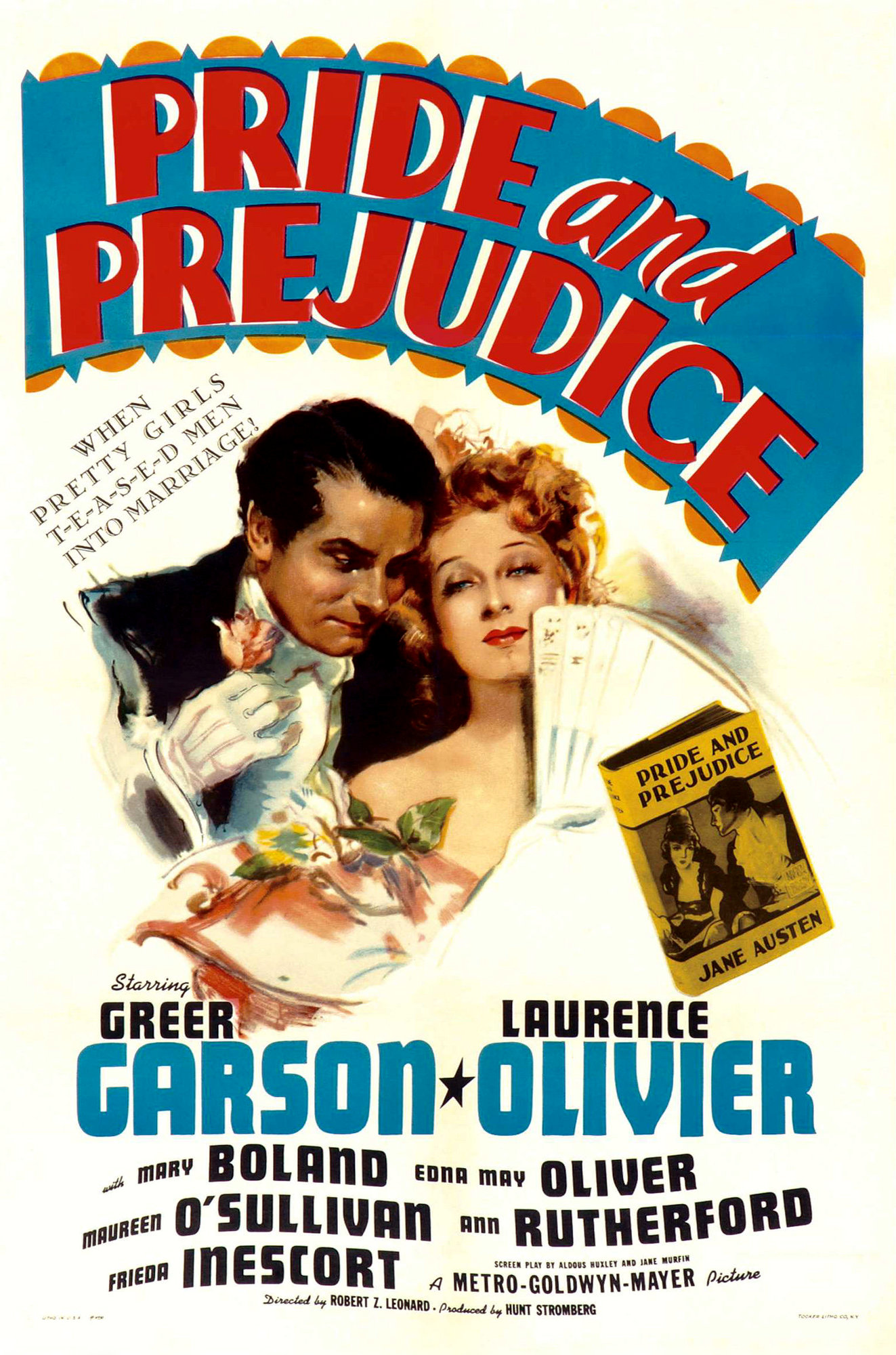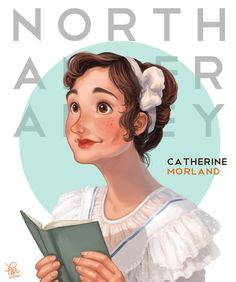His Girl Lizzy: Pride and Prejudice’s First Hollywood Adaptation
If I told you that the Marx Brothers are the reason why Hollywood has been enjoying a decades-long love affair with Jane Austen adaptations, you’d probably ask me what I’m smoking and where you can get some of it. But allegedly, when the stage adaptation of Pride and Prejudice debuted in 1936, Harpo Marx—yes, that Harpo Marx—suggested to Irving Thalberg that he buy the rights so his studio, MGM, could produce the movie version. Which honestly explains so, so much about the 1940 film starring Greer Garson, Laurence Olivier, and far too many hoop skirts. It may also explain why I love it so much—right down to its frothy, irreverent core.
[Spoilers ahead.]
Sometimes our hearts pick the stuff we love, overriding any sense of logic. And logically, this film should chafe my sensibilities. I know it rubs a lot of Austenphiles the wrong way—I can pinpoint the specific details as to why. Garson and Olivier are too old for their characters. The script completely changes Lady Catherine de Bourgh’s role (and erases poor Georgiana). We don’t get to see Pemberley at all (likely because MGM couldn’t afford to shoot in another location). The ending trips over itself to get to the finish line. And Mr. Collins is now Lady Catherine’s librarian? (But if he’s a servant, there’s no way he can inherit Longbourn, negating the urgency of the Bennet sisters’ husband-hunting in the first place … I digress.)
And then there’s the costumes. Dear God, those puffed sleeves … those bows … those bonnets. Apparently the costume designer, the estimable Adrian, requested that the setting change from the 1810s to mid-century (the exact year is hard to pin down, thanks to conflicting setting details), as the ostentatious fashion of that period was more appealing. But all the available Technicolor had been used up by Gone With The Wind, so the filmmakers were stuck filming in black and white. Just a bit of a fiasco all around.
The production was influenced by the film-making culture and trends of the time. Literary adaptations abounded: the aforementioned Wind, Romeo and Juliet, The Scarlet Pimpernel, Wuthering Heights (where Olivier also plays a tormented love interest). MGM was known for churning out sophisticated, witty films with big production values like Dinner At Eight and Grand Hotel. Garson’s Elizabeth is as modern as Vivian Leigh’s Scarlett O’Hara—less spoiled but just as opinionated, a whip-smart lady bound by old-world conventions. Pride and Prejudice was originally supposed to serve as a vehicle for Norma Shearer (ol’ Juliet herself), but once husband Thalberg died, that plan was abandoned. Mr. Collins’s career change can be blamed on the restrictive Hays Code, which dictated that movies couldn’t mock a member of the clergy. So now he’s the librarian for Rosings … even though he has a house in the village … look, just don’t overthink this.
And don’t think this movie escaped the American political climate, either. Lydia’s mention of her new servants being “secondhand” would be awfully relatable to an audience who spent the last decade in an economic depression; her claim that this savings, in addition to new husband Wickham’s buyout, means that they’re “rich, Mama!” definitely plays into that same audience’s fantasy. Though the production is American, the studio hired a ton of British cast and crew, and cheesy lines like “What does it matter where we go, as long as we go together?” hit differently when you consider that Britain was already fighting in WWII and America was soon to follow. So MGM’s P&P is a sunny confection with all the trimmings and none of the satire.
Ah, but how does the story itself fare? Well, it’s not quite as divorced from its source material as I think some JA fans maintain. Some of Elizabeth’s lines resemble dialogue from the book (bonus points for including “a rational creature speaking from her heart”); some lines evoke the spirit of Austen’s writing, but play with the intent; and yet other lines are just plain silly or, at worst, generic. Several characters transfer to the screen with ease: Mrs. Bennet is suitably flighty, Miss Bingley is a superb snob, and Jane is as cute as the puppy she gets to cuddle in one scene. Mr. Collins gets a perfect introductory scene where we see him practice giving a compliment—a stated pastime of his book counterpart. Garson is a frilly joy, displaying Lizzy’s good nature and snarky tendencies with equal aplomb. Olivier’s Darcy is just the right blend of stuffy, formidable, and sincere; in some scenes he effectively imbues his character with the complex, conservative morality I recognize from Book!Darcy.
That said, the dynamic between Lizzy and Darcy is perhaps a grating deviation from the novel. The scene at Bingley’s carnival/garden party shows Darcy rudely abandoning Lizzy as her family members embarrass themselves—just as Lizzy is beginning to like him. Whiplash much, movie? This off-again/on-again rhythm is better suited to rom-coms of the 1930s (It Happened One Night, My Favorite Wife and The Awful Truth come to mind); consequently, I believe, this is where the popular portrayal of Lizzy and Darcy as combative love interests was born. We see this again and again in other adaptations—it even bleeds into the 1995 miniseries, where Lizzy’s barbs and Darcy’s reception of them bring the subtext into text. Bride & Prejudice also puts the conflict between the leads front and center, because sometimes subtlety doesn’t need to exist.
There are other marks the 1940 P&P has left on subsequent JA adaptations. The archery scene is repurposed in 1996’s Emma as a metaphor for match-making. Garson’s age is perhaps not appropriate, but I don’t hear a lot of people complaining about Emma Thompson playing the technically teenaged Elinor Dashwood. The film also begins the tradition of portraying a nicer version of Mary (be-spectacled and always attached to a book as all 20th century fictional nerds are). And how can I forget Mr. Bennet, whose cynicism is softened into dad jokes to make him a palatable papa? Without his isolationist philosophy, Mr. Bennet becomes the father-knows-best archetype 1930s audiences saw in the gooey Andy Hardy films (also MGM).
Maybe all this messy detail—the history of the production, the cultural and economical trends of th 1930s, the stage-y acting—is why I love this movie the way I do. It’s as playful as Lizzy, tearing up the source material whenever it feels like it, but its heart (and morals) are in the right place. It’s kinder to its characters than the novel is because MGM was good at selling nice families to a movie-going public in need of comfort stories. That madcap ending scene strikes a strange note if the modern viewer isn’t willing to go along with the movie’s screwball sensibility—like, when did Lougbourn turn into a zoo? Why is Darcy hugging Lady Catherine? I mean, Lydia bonds with Mr. Collins over being “old married people.” But what else can we expect from a JA adaptation that was suggested by a freaking Marx Brother?



This is one adaptation I have yet to see from beginning to end. I hate to admit it, but the Gone with the Wind-esque costumes always put me off, as did Greer Garson and Lawrence Olivier as Elizabeth and Darcy. Your take on it, though, (and your writing style) was very enjoyable. I actually feel compelled to give it another try...
ReplyDeleteJust to comment on one of your points, Harpo Marx was a zany on screen....until he sat down behind the harp, and then you saw the real Harpo. Besides teaching himself music, and finally taking real harp lessons later in life, he also was interested in painting and was a member of the Algonquin Round Table. So I could see him being interested in Austen.
ReplyDelete